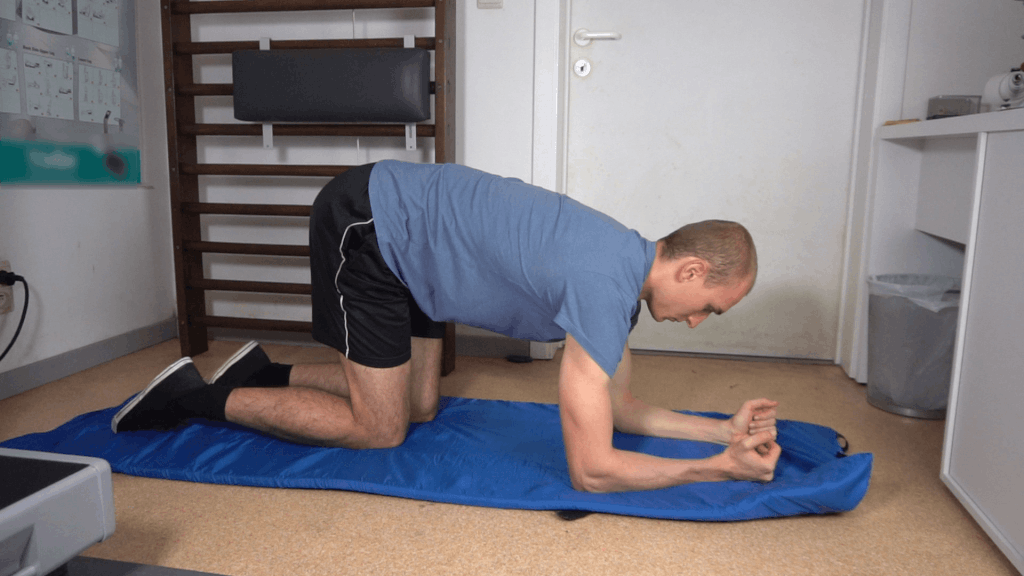The plank exercise is popular but many people want to add some variety. Find out how to do plank rolls and whether they are any good.
You can describe different movements with the name plank roll.
That being said, this article considers plank rolls a variation of regular planks where you switch between a side plank on your left side, a regular plank, and a side plank on your right side.
This works muscles like your abs, obliques, outer thighs, and to some extent shoulders.
You could see some benefits in these areas by doing enough plank rolls with enough weight. However, it is fair to say this exercise is not that effective either.
The first reason for this is that plank rolls work your muscles in an isometric (static) way. Secondly, you give your muscles a good amount of rest in between each roll.
So unless you find plank rolls extremely fun, you likely don’t want to do this exercise. Even then, you want to implement some alternatives that can actually get you nice results.
How to do a plank roll
A soft surface like a yoga mat can make plank rolls a lot more comfortable on your elbows. That aside, take the following steps to do this exercise:
- Sit on your forearms and knees.
- Step back with your feet until you are in a straight line from your head to your heels. Keep your shoulders above your elbow.
- Slowly rotate your upper body to one side until you are in a side plank position where you only rest on one arm and one foot. Keep your body more or less straight.
- Return to the position in step 2 in a controlled motion.
- Do the movement from step 3 but to the other side.

If you currently find plank rolls too hard you can start with plank progressions like knee planks and knee side planks. Potentially already with rolls.
Plank rolls muscles worked
The main muscles worked in plank rolls are your abs, obliques, outer thigh muscles, and to some extent shoulders.
Additionally, your glutes (butt), quadriceps (front thighs), and trapezius (upper back) will have to work to a small extent to keep your body in a straight line and in position.
Compared to regular planks, plank rolls mostly train your obliques slightly more and shoulders more.
That being said, plank rolls are relatively lacking for working all these muscles.
First of all, while you are moving, plank rolls still work the main muscles in an isometric aka static way. This is generally less effective than more dynamic exercises.
Secondly, after each turn, you give your abs, obliques, and/or outer thigh muscles some rest. You generally want to pressure muscles in one continuous set of movements.
That being said, plank rolls should still be able to offer you muscle-related benefits. Potentially with the help of something like a weighted vest close to your hips.
How many plank rolls you should do is not particularly well-studied.
You could start with the regular plank sets and reps but the extra rests in between each turn will change what is actually the most effective.
Plank rolls benefits
Plank rolls are definitely not the most effective exercise choice out there but they can still offer some benefits to some extent. A few of these are:
- Better muscle endurance: Doing plank rolls will likely improve your muscle endurance to some extent. Advanced lifters may need extra weights to achieve this.
- No equipment or location required: Many people will find bodyweight plank rolls challenging enough. In turn, this would mean you don’t need to invest any money in fitness equipment or spend time driving to the gym to do this exercise.
- You may find plank rolls more comfortable: Some people find dynamic exercises uncomfortable on their spines. In a case like that, exercises like plank rolls that work your core in a static way could feel more comfortable.
- May reduce or prevent back pain: Improving your core muscle endurance with plank rolls can reduce or prevent back pain (1, 2).
- Balance & coordination: You can improve your balance and coordination by challenging yourself in these areas. Plank rolls could be hard enough to help with this.
It is worth mentioning again that if you don’t necessarily like plank rolls but do like their benefits, you will likely prefer the results from the alternatives below.
Plank roll alternatives
There are many types of plank roll alternatives. Some of these work the same muscles dynamically, work the same muscles isometrically but more effectively, and/or work different muscles.
- Side bends
- Side plank dips
- Hanging sideways knee raises
- Crunches
- Ab wheel V-rolls
- Bicycle crunches
When choosing between these plank roll alternatives you want to think about what muscles you want to work and see what movements your body is comfortable with.
Are plank rolls a good exercise?
Doing plank rolls is likely better than doing nothing but it is hard to really call these a good exercise.
You could see some muscle endurance improvements in areas like your abs, obliques, and/or outer thighs.
However, due to the extra breaks in between repetitions and isometric muscle engagement, you will likely prefer one of the other side plank variations or more generally core exercises.
If you do really like plank rolls and decide to do more of them it could be smart to add something like a weighted vest to the exercise.
This will help you work your muscles harder which tends to be beneficial for muscle-related positive effects if you don’t overdo it.
Related posts:
